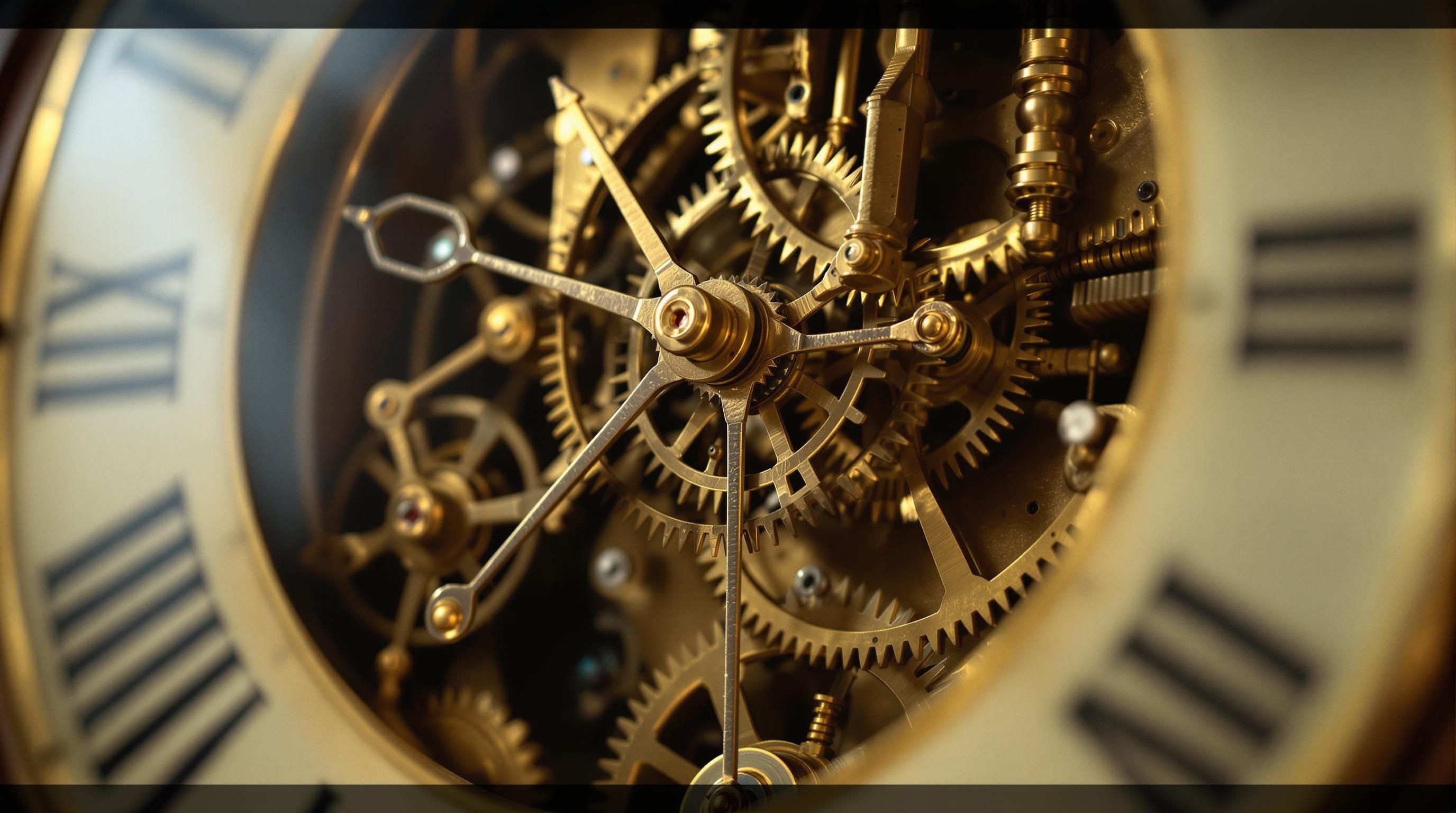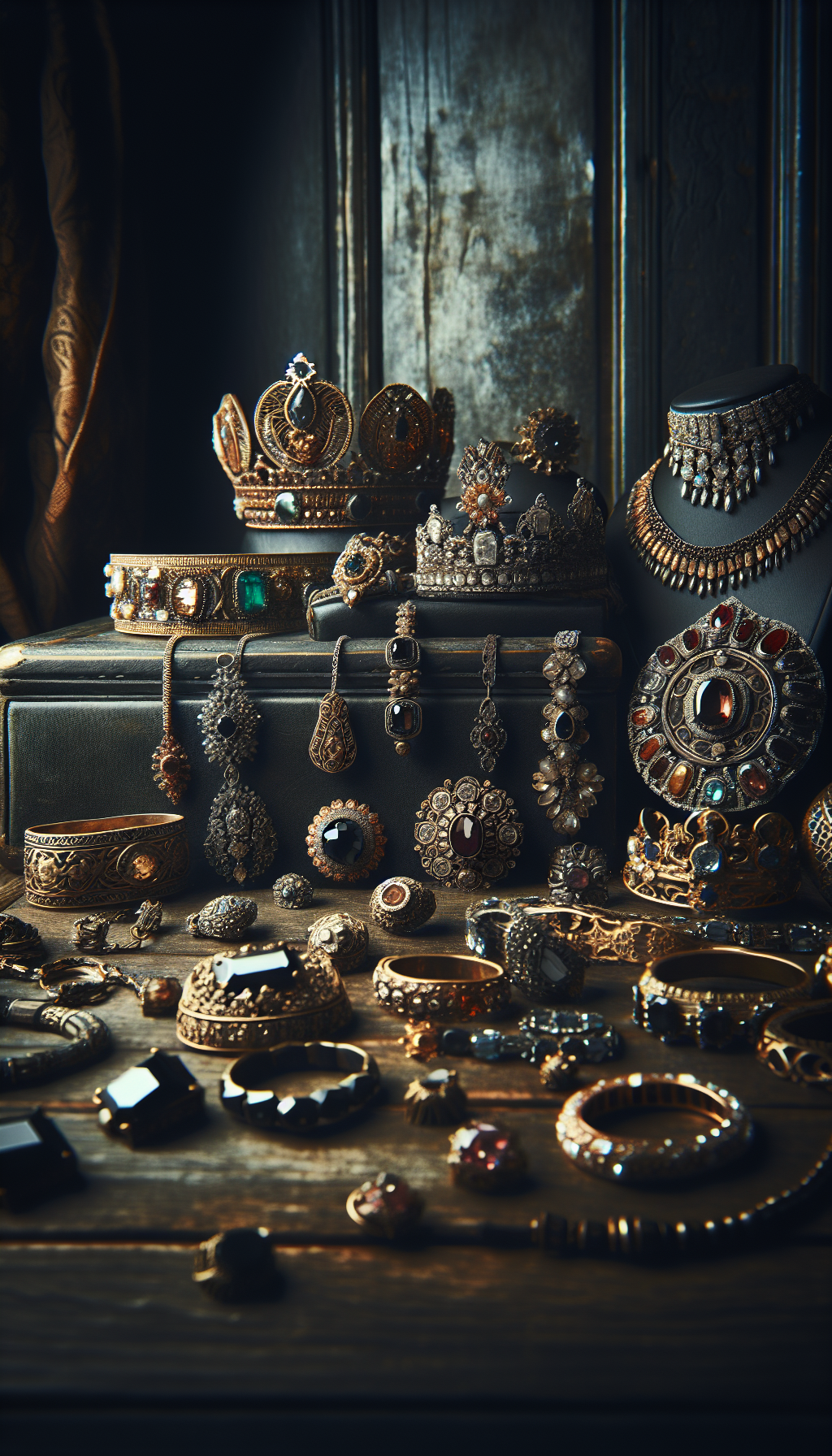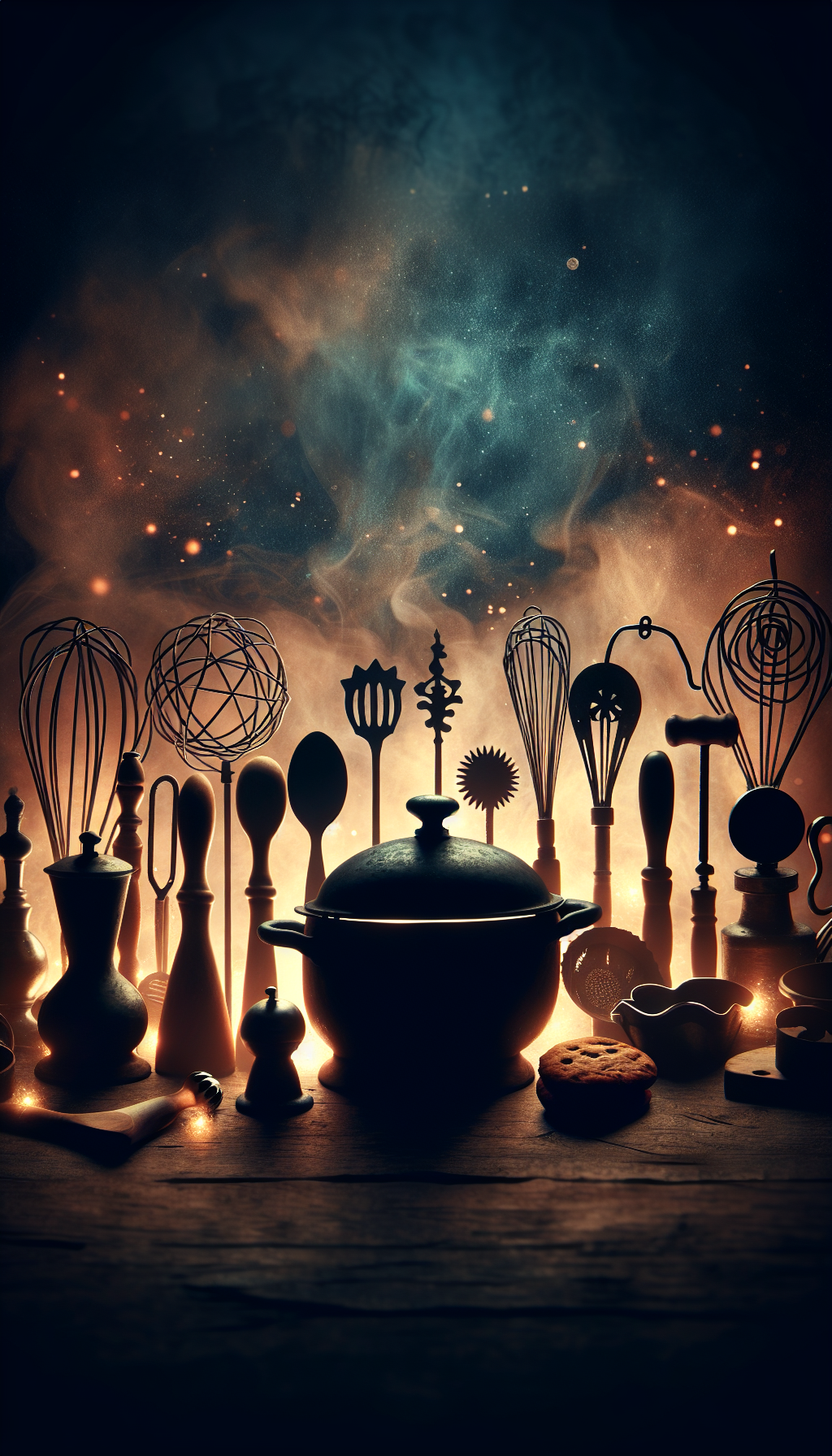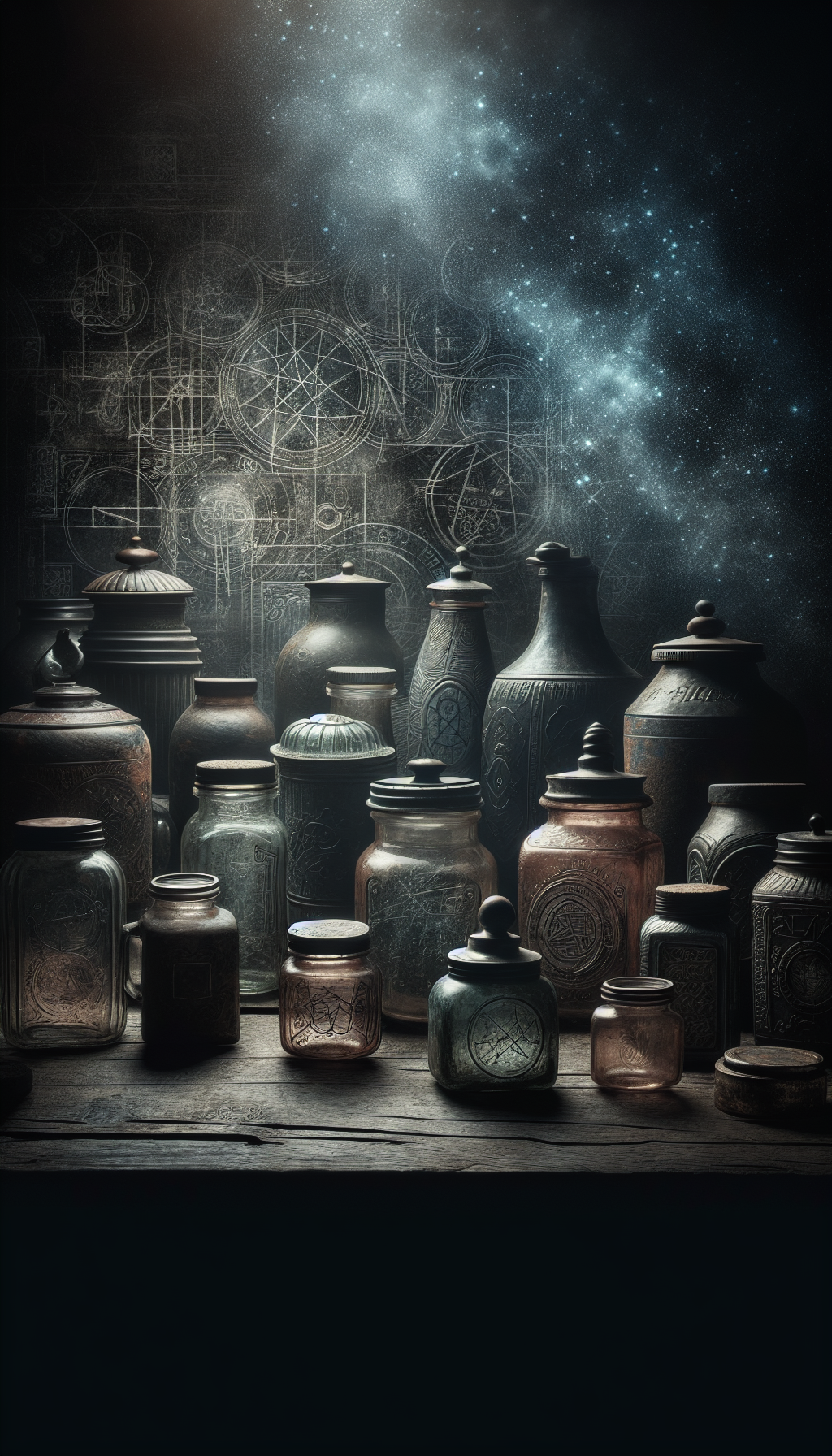Introduction to Antique Clock Values
Antique clocks stand as remarkable testaments to human ingenuity, craftsmanship, and artistry. Beyond their practical function of timekeeping, these historical treasures capture the essence of the eras in which they were created. For collectors, enthusiasts, and inheritors alike, understanding the value of these timepieces is essential—whether for insurance purposes, potential sales, or simply appreciating their historical significance.
The world of antique clocks encompasses a vast array of styles, mechanisms, and origins. From ornate grandfather clocks that stand as stately sentinels in hallways to delicate carriage clocks designed for travel, each category carries its own value considerations and market appeal.
In this comprehensive guide, we’ll explore the primary factors that determine antique clock values, examine the most sought-after types and makers, and provide practical advice for identifying, authenticating, and appraising these mechanical marvels. Whether you’re curious about a family heirloom or considering starting a collection, this resource will help you navigate the intricate world of collectible timepieces.
Key Factors That Determine Antique Clock Value
Age and Provenance
Age often correlates with value in antique clocks, though this relationship isn’t strictly linear. Clocks from the late 17th and 18th centuries are typically more valuable than later pieces, especially those made by renowned clockmakers of the period. However, exceptional examples from the 19th century can command impressive prices as well.
Established provenance—documented history of ownership—can substantially increase a clock’s value. Timepieces with connections to historical figures or events often attract premium prices at auction. For example, a clock owned by a notable historical figure might fetch several times the value of an identical model without such provenance.
Maker and Origin
The creator of a timepiece significantly impacts its value. Clocks produced by celebrated makers like Thomas Tompion, John Harrison, or Abraham-Louis Breguet routinely command prices far beyond those of their contemporaries. American makers like Seth Thomas, Eli Terry, and the Willard family have devoted collector followings.
Geographic origin also influences value. Generally, English, French, and Swiss timepieces tend to be most sought after, followed by German, American, and other European examples. However, exceptional examples from any region can achieve remarkable prices.
Rarity and Uniqueness
The scarcity of a particular model dramatically affects its market value. Limited production runs, experimental designs, or clocks featuring unusual complications or mechanisms typically command premium prices. Examples include:
- Mystery clocks with seemingly magical floating hands
- Automaton clocks featuring animated figures
- Astronomical clocks displaying celestial movements
- Skeleton clocks with visible mechanisms
The more unusual or innovative the design, the greater the potential value to specialized collectors.
Condition and Originality
Condition Impact on Antique Clock Values
The condition of an antique clock is paramount to its value. Collectors and investors prize examples with:
- Original finish and patina
- All original mechanical components
- Unaltered cases and dials
- Original hands, feet, finials, and decorative elements
- Working movements (though this is less critical than authenticity)
Extensive restoration, replacement parts, or modifications can significantly diminish value. However, sensitive, well-documented restorations by master craftsmen may preserve much of a clock’s worth, especially if addressing structural issues necessary for long-term preservation.
Complexity of Mechanism
The intricacy of a clock’s movement often correlates with its value. Timepieces with complex mechanisms such as repeaters (which chime the hours on demand), perpetual calendars, or astronomical indicators typically command higher prices than simpler models. The craftsmanship required to create these complex mechanisms represents superior technical skill and innovation.
Most Valuable Types of Antique Clocks
Grandfather and Tall Case Clocks
Tall case clocks, commonly known as grandfather clocks, represent some of the most significant investments in the antique clock market. These imposing timepieces often served as status symbols and showcases for both cabinetmaking and clockmaking skills.
The most valuable examples typically feature:
- Cases by master cabinetmakers in mahogany, walnut, or exotic woods
- Complex movements with multiple functions (moon phases, calendar dials, etc.)
- Original painted dials or high-quality brass dials
- Pristine or sensitively preserved finishes
English grandfather clocks by makers like Thomas Tompion or George Graham can fetch $50,000 to $500,000 at auction, while fine American examples by the Willard family might sell for $20,000 to $100,000.
French Mantel and Cartel Clocks
French clocks from the 18th and early 19th centuries, particularly those created during the Louis XV, Louis XVI, and Empire periods, are highly prized for their artistic merit and technical excellence.
Exceptional examples include:
- Bronze doré (gilt bronze) mantel clocks with sculptural elements
- Cartel (wall-mounted) clocks with elaborate rococo ornamentation
- Mystery clocks by Jean-Eugène Robert-Houdin or Maison Breguet
- Porcelain-mounted clock sets with matching candelabra (garnitures)
Elaborate French mantel clocks can range from $5,000 for simpler designs to over $100,000 for exceptional pieces by renowned makers like Julien Le Roy or Ferdinand Berthoud.
Bracket and Carriage Clocks
Developed for portability, these smaller clocks represent excellent entry points for collectors while still offering significant investment potential.
Notable varieties include:
- English bracket clocks with verge escapements from the 18th century
- French carriage clocks with complications (repeaters, alarms, calendars)
- Multi-dial officer’s traveling clocks
- Miniature carriage clocks with fine enameling or unusual cases
Fine English bracket clocks can range from $5,000 to $50,000, while exceptional French carriage clocks might sell for $3,000 to $25,000 depending on complications and maker.
Rare Wall Clocks
Certain wall clocks, particularly those with unusual mechanisms or distinctive regional characteristics, can achieve impressive values.
Sought-after types include:
- Vienna regulators with precision movements
- American banjo clocks by the Willard family
- Black Forest cuckoo clocks with elaborate carved cases
- Scottish long-case clocks with painted dials
Prices vary dramatically by type, maker, and condition, ranging from $1,000 for simple examples to $50,000+ for exceptional pieces.
Notable Antique Clock Auction Records
Recent significant sales highlight the highest values achieved by exceptional examples
</tbody>
</table>
How to Identify Valuable Antique Clocks
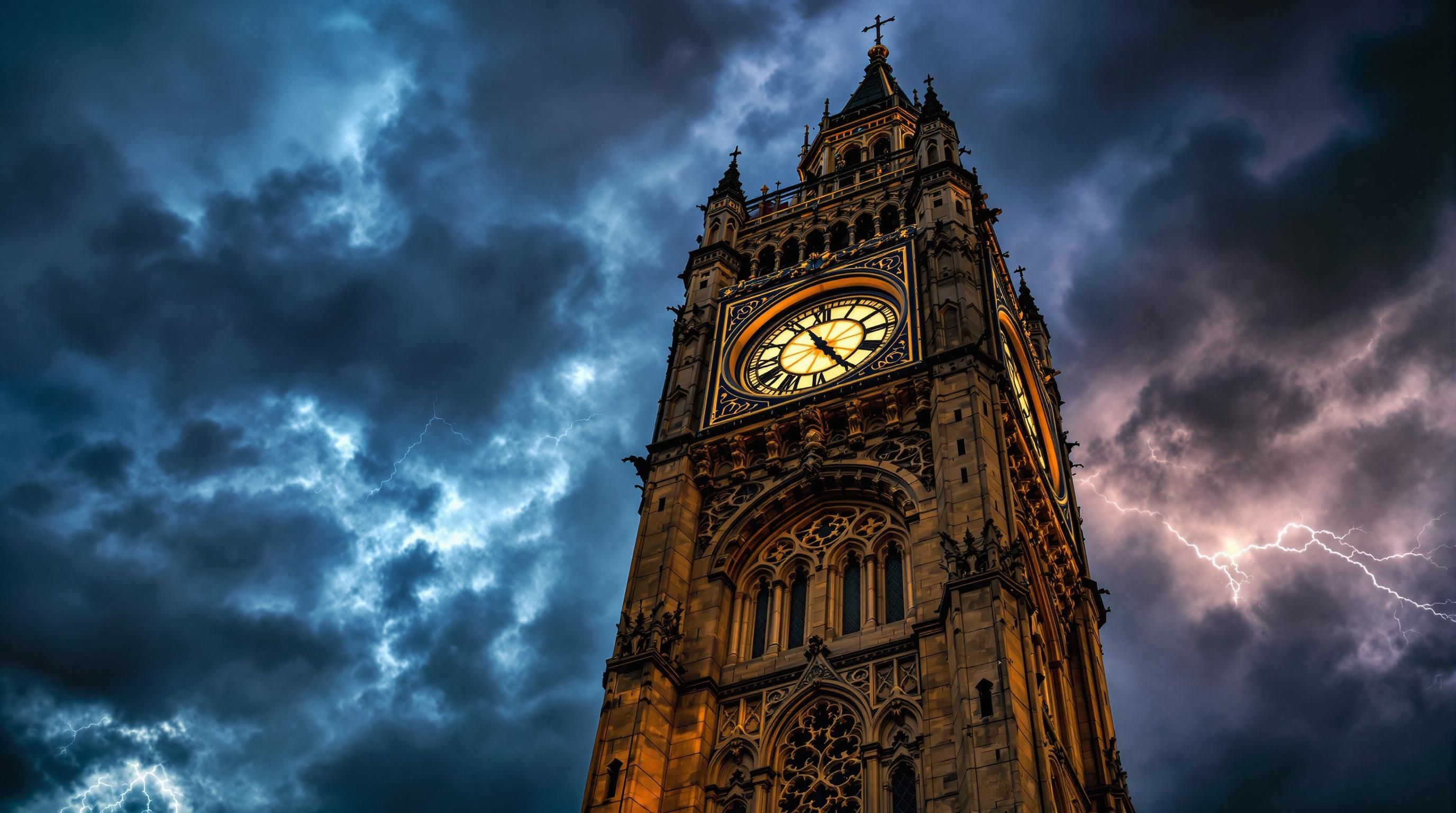
Examining Maker’s Marks and Signatures
The most reliable indicator of a clock’s potential value is its maker’s mark or signature. These identifying marks may appear:
- On the clock dial (especially common in English and American clocks)
- On the backplate of the movement
- Inside the case on a paper label (particularly in American clocks)
- Stamped into the movement plates (common in French clocks)
To authenticate these signatures, consult reference books or online databases dedicated to specific makers or clock types. Be aware that prestigious makers’ works are frequently counterfeited, and signatures may be added to enhance value.
Analyzing Clock Movements and Mechanisms
A clock’s movement can reveal significant information about its age, origin, and potential value:
- Hand-forged parts typically indicate pre-1820 construction
- Filed marks on brass plates suggest hand-finishing methods used before mass production
- Verge escapements generally indicate earlier production than anchor escapements
- Steel components with file marks rather than machine finishing suggest earlier manufacturing
Understanding movement evolution can help date a clock even without maker’s marks. For example, anchor escapements became common in the early 18th century, while balance wheel escapements in small clocks typically suggest 19th-century origins.
Evaluating Case Design and Materials
The case’s design, materials, and construction techniques provide valuable clues about a clock’s age and origin:
- European clocks often feature walnut, mahogany, or exotic woods with intricate inlays
- American cases frequently use cherry, maple, or pine in simpler designs
- Dovetail joints changed in appearance over time, evolving from wider, hand-cut joints to narrower, more precise machine-cut joints
- Finishing techniques evolved from hand polishing to more uniform machine methods
Regional distinctive features, such as painted decoration in Black Forest clocks or specific hood styles in English tall cases, can help identify the clock’s origins.
Antique Clock Condition Assessment Checklist
Use this checklist to evaluate the condition of an antique clock
- Original dial with minimal restoration
- Original hands matching the period of the clock
- Movement appears complete with no obvious replacement parts
- Case retains original finish or appropriate patina
- Glass or door panels are original to the piece
- All decorative elements (finials, feet, etc.) are present and original
- No significant structural damage to the case
- Movement functions or shows signs it could function with proper maintenance
Current Market Values and Price Ranges
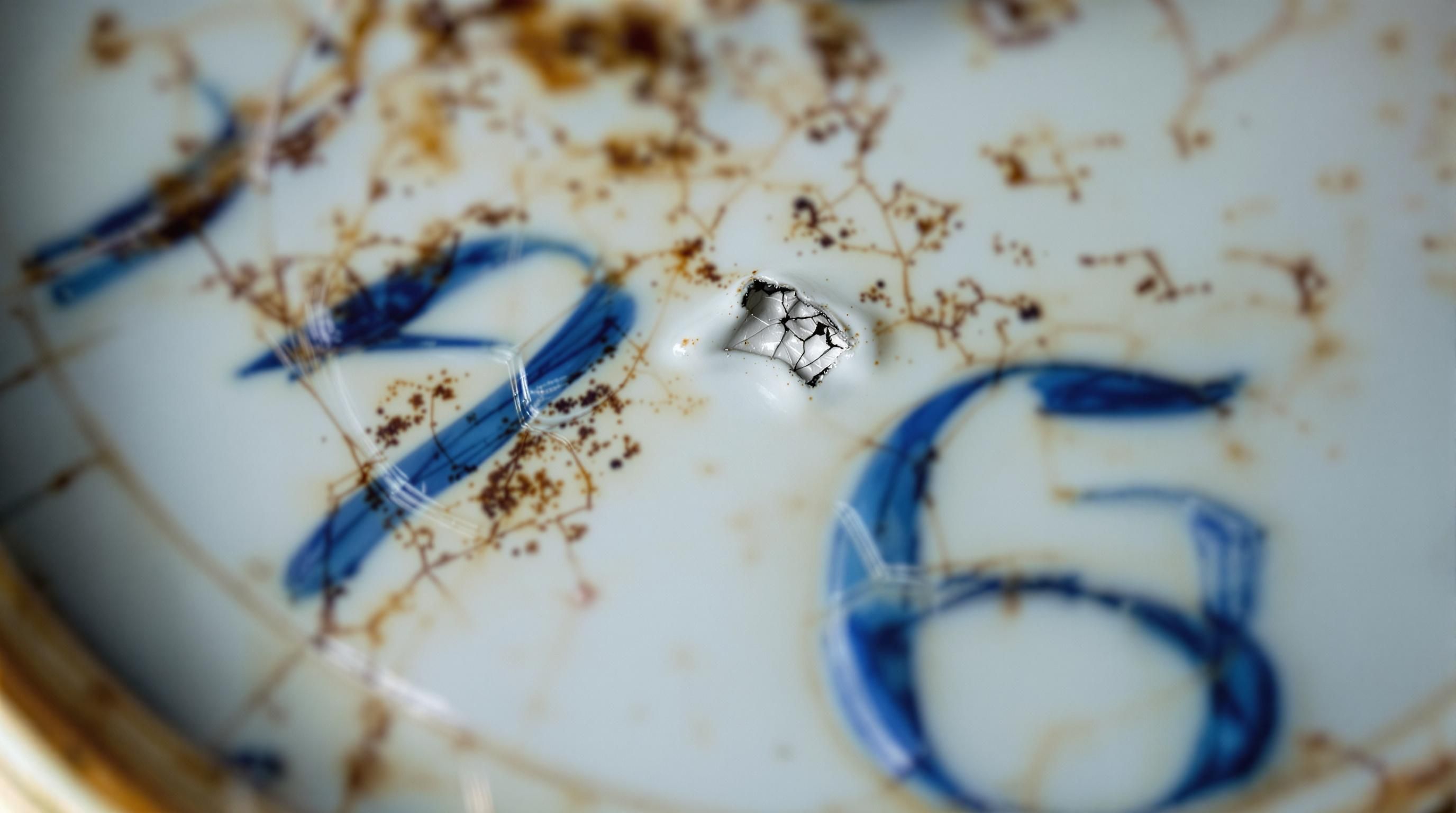
Grandfather and Tall Case Clocks
The market for grandfather clocks varies significantly based on maker, condition, and provenance:
Grandfather Clock Market Values
Current price ranges by category and maker
| Item | Price | Date | Auction House |
|---|---|---|---|
| Sympathique Clock by Breguet (1795) | $6.8 million | 2012 | Sotheby's |
| Chinese Ormolu Clock (1736-1795) | $4.0 million | 2016 | Christie's |
| Thomas Tompion Clock (1693) | $2.1 million | 2019 | Bonhams |
| James Cox Peacock Automaton Clock | $1.6 million | 2017 | Sotheby's |
</tbody>
</table>
Mantel and Bracket Clocks
Smaller decorative clocks show strong market performance due to their adaptability to modern homes:
Mantel and Bracket Clock Values
Current market ranges for decorative table clocks
| Category | Price | Notes |
|---|---|---|
| English Tall Case Clocks (18th century) | $15,000 - $100,000+ | Premium for Tompion, Graham, and other notable makers |
| American Tall Case Clocks (18th-19th century) | $5,000 - $50,000 | Higher values for Willard family, Simon Willard examples |
| Continental European Tall Case Clocks | $3,000 - $25,000 | Value increases with complexity of movement and case |
| Victorian and Later Tall Case Clocks | $1,500 - $10,000 | Lower values reflect greater availability |
</tbody>
</table>
Wall Clocks and Specialty Timepieces
The market for wall-mounted and specialized clocks varies widely:
Wall and Specialty Clock Values
Current market ranges for wall-mounted and unusual timepieces
| Category | Price | Notes |
|---|---|---|
| French Ormolu Mantel Clocks (18th-19th century) | $2,000 - $50,000+ | Figures and elaborate decoration increase value |
| English Bracket Clocks (18th century) | $3,000 - $25,000 | Ebony-veneered cases particularly desirable |
| American Shelf Clocks (19th century) | $300 - $5,000 | Seth Thomas, Eli Terry examples command premiums |
| Art Deco and Art Nouveau Mantel Clocks | $500 - $5,000 | Rising interest in early 20th-century designs |
</tbody>
</table>
Market Trends and Investment Potential
The antique clock market has shown relatively stable long-term performance with particular strength in several categories:
- High-quality examples by renowned makers continue to appreciate steadily
- Clocks with unusual complications or mechanisms show strong investment performance
- Original-condition examples increasingly command significant premiums
- The middle market ($1,000-$10,000) shows more volatility than the high end
- Online sales have expanded the collector base globally but increased competition
For investment purposes, focus on acquiring the best examples you can afford, prioritizing maker reputation, original condition, and documented provenance.
Evolution of Antique Clock Values and Collecting Trends
- 1950s-1960s
Traditional Collecting Era
Emphasis on American tall case clocks and European decorative timepieces. Values relatively modest with grandfather clocks available for hundreds rather than thousands. - 1970s-1980s
Rising Interest Period
Significant appreciation in values as formal antiques gained popularity. Established auction records began to be set for exceptional examples by Tompion and other master clockmakers. - 1990s-2000s
Peak Traditional Market
High point for many traditional antique categories. Museum-quality examples reached new price thresholds while middle-market pieces performed steadily. - 2010s-Present
Selective Appreciation Era
Market becomes more discerning with emphasis on condition, originality, and provenance. Exceptional pieces continue setting records while lesser examples face challenges.
Getting Your Antique Clock Appraised
Finding Qualified Appraisers
When seeking an appraisal for your antique clock, look for professionals with:
- Membership in recognized appraisal organizations (International Society of Appraisers, American Society of Appraisers)
- Specialization in horology or antique timepieces
- Formal training in appraisal methodology and ethics
- No conflict of interest (ideally not someone who wants to purchase the item)
For insurance or estate purposes, a written appraisal from a qualified professional is essential. This document should include detailed descriptions, condition assessment, valuation methodology, and current replacement value.
Appraisal Types and Costs
Different appraisal types serve different purposes:
- Insurance Appraisals: Determine replacement value in current retail markets
- Fair Market Value Appraisals: Determine likely sale price between willing buyers and sellers (used for estate tax)
- Liquidation Value Appraisals: Determine value in forced-sale scenarios
Professional appraisal fees typically range from $200-$500 for standard written appraisals, though complex or valuable timepieces may justify higher fees. Avoid appraisals offered as “free” services by dealers who may have ulterior motives.
Documentation and Preparation
To maximize the value of an appraisal, prepare the following information:
- Any known history or provenance of the clock
- Previous sales receipts or appraisal documents
- Documentation of repairs or restoration work
- Photographs of the clock from multiple angles
- Any maker’s marks or labels (including inside the case)
This information helps the appraiser provide the most accurate valuation and can sometimes reveal previously unknown value factors.
Selling Antique Clocks: Options and Considerations
Auction Houses
For significant pieces, established auction houses offer several advantages:
- Access to specialized collectors and international buyers
- Marketing expertise to highlight important features
- Authentication services to verify attributions
- Competitive bidding environment to maximize value
Major houses like Christie’s, Sotheby’s, and Bonhams typically focus on higher-value pieces (generally $5,000+), while regional auction houses may accept more modest examples. Commission rates typically range from 10-25% of the hammer price, with higher-value items often negotiable.
Specialized Dealers
Antique clock dealers offer an alternative selling channel with distinct characteristics:
- Immediate payment rather than waiting for auction dates
- Expert knowledge of specific clock categories
- Established collector networks for targeted marketing
- Potential for consignment arrangements
Dealers typically pay 40-60% of retail value to allow for their profit margin and holding costs. However, exceptional pieces may command higher percentages due to their marketability.
Online Marketplaces
The digital marketplace has expanded selling options:
- General platforms like eBay reach broad audiences but require careful shipping planning
- Specialized sites like 1stDibs focus on higher-end decorative arts
- Direct collector sales through forums and social media groups
- Online auction platforms with specialized clock sales
These channels typically offer lower commission rates (5-20%) but may require more seller involvement in marketing, answering questions, and handling logistics.
Preparing Clocks for Sale
Regardless of your chosen selling method, proper preparation can significantly impact realized values:
- Have the clock professionally cleaned but avoid aggressive restoration
- Gather documentation of provenance and history
- Obtain service records showing the movement has been properly maintained
- Prepare detailed photographs showing all aspects including movement, dial, and case
- Research comparable sales to establish realistic expectations
Timing can also impact results—specialized clock auctions or thematic sales often attract more focused collector attention than general antique auctions.
Common Questions About Antique Clock Values
How do I know if my antique clock is valuable?
Several key indicators suggest potential value in an antique clock:
Maker’s Signature: Clocks by recognized makers like Thomas Tompion, Seth Thomas, or Eli Terry typically hold greater value.
Condition and Originality: Clocks with original finish, original hands and dials, and minimal restoration generally command higher prices.
Mechanical Complexity: Timepieces with unusual complications (repeaters, astronomical dials, automata) are typically more valuable than simple time-only examples.
Age and Rarity: Generally, pre-1850 clocks hold greater value, particularly if they represent uncommon designs or limited production models.
For a definitive assessment, consult a professional appraiser specializing in horology. They can provide documentation of the clock’s authenticity, condition, and fair market value.
Does anyone buy antique clocks?
Yes, there remains a strong market for antique clocks. Several buyer categories exist:
Specialized Collectors: Often focus on specific types, periods, or makers
Antique Dealers: Buy for resale to collectors and decorators
Auction Houses: Accept consignments for specialized clock auctions
Museums and Historical Societies: Purchase significant examples for their collections
Interior Designers: Seek decorative examples for client projects
The most appropriate buyer depends on your clock’s type, condition, and value. High-end pieces typically sell best through specialized auctions or dealers, while more common examples might find buyers through online marketplaces or general antique shops.
How to appraise an antique clock?
Professional appraisal of an antique clock involves several key steps:
Identification: Determining the maker, period, and type of clock
Authentication: Verifying the originality of components and authenticity of maker’s marks
Condition Assessment: Evaluating case condition, mechanical integrity, and extent of any restoration
Market Research: Analyzing recent comparable sales data for similar examples
Valuation: Establishing fair market value based on all available factors
While you can research preliminary information yourself using reference books and online resources, formal appraisals should be conducted by certified professionals with expertise in horology. Look for appraisers certified by organizations like the International Society of Appraisers or American Society of Appraisers.
How old does a clock have to be to be vintage?
In the collecting world, these terms have specific meanings:
Antique: Generally refers to items at least 100 years old. Thus, as of 2023, clocks made before 1923 would typically be considered antique.
Vintage: Usually describes items between 20-100 years old. Clocks from approximately 1923-2003 might be classified as vintage.
Collectible: More recent items with particular appeal or significance.
Age alone doesn’t determine value—a high-quality "vintage" clock from the Art Deco period (1920s-30s) might be worth more than an "antique" mass-produced clock from the late 19th century. Condition, maker, and design significance often outweigh pure chronological age.
What are the most valuable antique clocks?
The most valuable antique clocks typically share several characteristics:
Prestigious Makers: Works by Thomas Tompion, Abraham-Louis Breguet, John Harrison, and other master clockmakers consistently achieve the highest prices.
Exceptional Innovation: Clocks featuring technical breakthroughs or novel mechanisms command premium prices. Examples include the first marine chronometers or early precision regulators.
Historical Significance: Timepieces owned by historical figures or associated with significant events carry substantial value beyond their technical merits.
Extreme Rarity: Unique prototypes, limited productions, or surviving examples from early periods naturally command higher prices.
Record-setting examples include the Breguet Sympathique clock ($6.8 million in 2012), Chinese Ormolu clocks from the Qianlong period (over $4 million), and precision regulators by Thomas Tompion (over $2 million).
Should I repair my antique clock before selling it?
This common question requires careful consideration:
For Basic Cleaning and Adjustment: Light cleaning and proper adjustment of the movement by a qualified horologist is generally beneficial and can demonstrate the clock’s functionality to potential buyers.
For Major Restoration: Extensive restoration (refinishing cases, replacing dials, etc.) is typically discouraged before selling as collectors often prefer original condition with natural patina, even with flaws.
For Structural Issues: Repairs essential to the clock’s stability and preservation (securing loose veneer, stabilizing joints) are usually worthwhile.
For Missing Elements: Replacing missing hands, finials, or other components with appropriate period pieces may be worthwhile for significant clocks, but should be documented transparently.
When in doubt, consult with a specialized clock dealer or auctioneer before investing in repairs, as inappropriate restoration can permanently diminish value.
External Resources for Antique Clock Valuation
Antique Clocks Price Guide
Comprehensive database of antique clock prices with extensive listings of makers, models, and realized auction values. Particularly useful for American clock research.
M.S. Rau Antiques - Clock Collection
Premier dealer offering museum-quality antique clocks with detailed descriptions and historical context. Useful reference for high-end market values and significant examples.
Cottone Auctions - Wall Clock Values
Auction house specializing in fine antiques with strong emphasis on clocks. Their archives provide valuable pricing information for wall clocks and other timepieces.
Fontaine's Auction Gallery - Clock Consignment
Specialized auction house with expertise in antique clocks offering appraisal and authentication services. Their past auction records provide valuable market insights.
Clockworks - Antique Clock Value Guide
Educational resource on antique clock values with specific information on factors affecting marketability and investment potential.
Tic Toc Clock Repairs - Valuation Guide
Practical guide to evaluating antique clock values with emphasis on condition assessment and authentication techniques.
Clockworks Horloges - Clock Evaluation Factors
Detailed examination of the five key factors in evaluating antique clocks: age, scarcity, condition, popularity, and market dynamics.
LoveAntiques - Antique Clock Collection
Curated marketplace for antique clocks with emphasis on English examples. Provides useful reference points for current asking prices across various categories.
Conclusion: The Enduring Value of Antique Clocks
Antique clocks represent more than just timekeeping devices—they embody the artistic vision, mechanical ingenuity, and craftsmanship of their eras. Their value extends beyond monetary considerations to encompass historical significance, aesthetic beauty, and technical achievement.
For collectors, these timepieces offer endless fascination, whether in the precision engineering of their movements, the artistry of their cases, or the historical narratives they represent. As functional art objects, they continue to serve both practical and decorative purposes while generally maintaining their value over time.
When assessing the worth of an antique clock, remember that multiple factors contribute to its market value—maker reputation, condition, rarity, age, and provenance all play crucial roles. Professional appraisal remains the most reliable method for establishing accurate valuations, particularly for significant examples.
Whether you’re a seasoned collector or have recently inherited a family timepiece, understanding these value factors will help you make informed decisions about preservation, insurance, or potential sale. By appreciating both the artistic and mechanical aspects of these remarkable objects, you participate in the ongoing stewardship of horological history.
Get a Professional Appraisal
Unsure about your item’s value? Our certified experts provide fast, written appraisals you can trust.
- Expert report with photos and comps
- Fast turnaround
- Fixed, upfront pricing
No obligation. Secure upload.
| Category | Price | Notes |
|---|---|---|
| Vienna Regulator Wall Clocks | $1,000 - $15,000 | Higher values for grande sonnerie examples |
| American Banjo Clocks | $2,000 - $20,000 | Authentic Willard examples at premium end |
| Black Forest Cuckoo Clocks | $500 - $10,000 | Intricate carving and multiple automata increase value |
| Ship's Chronometers | $2,000 - $30,000 | Naval history and documented use increase value |
